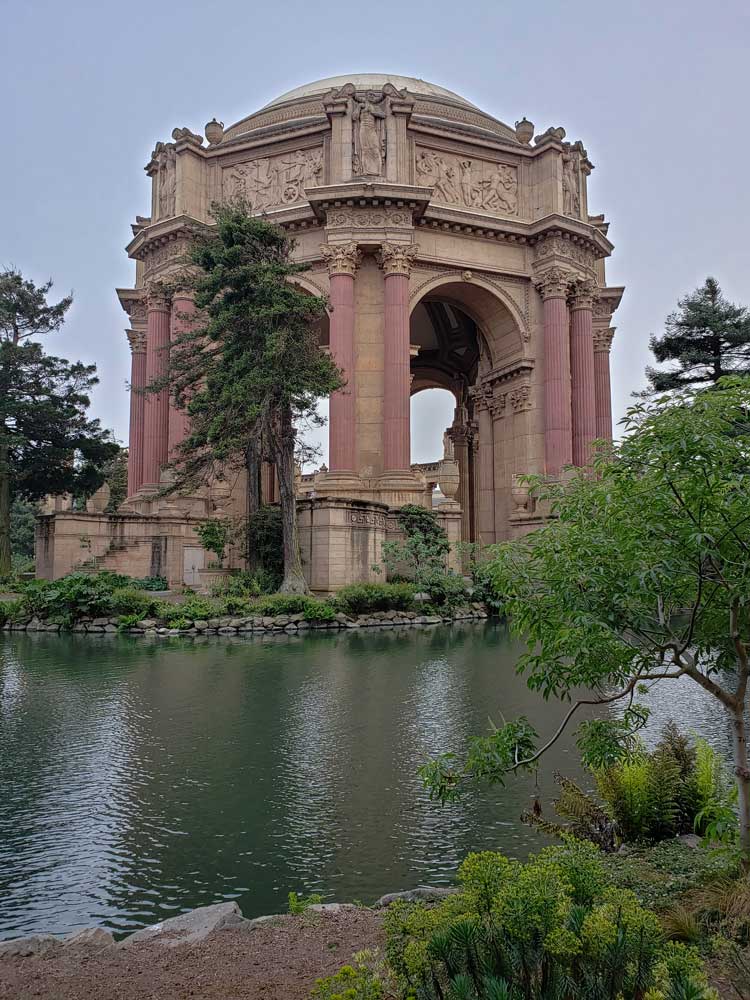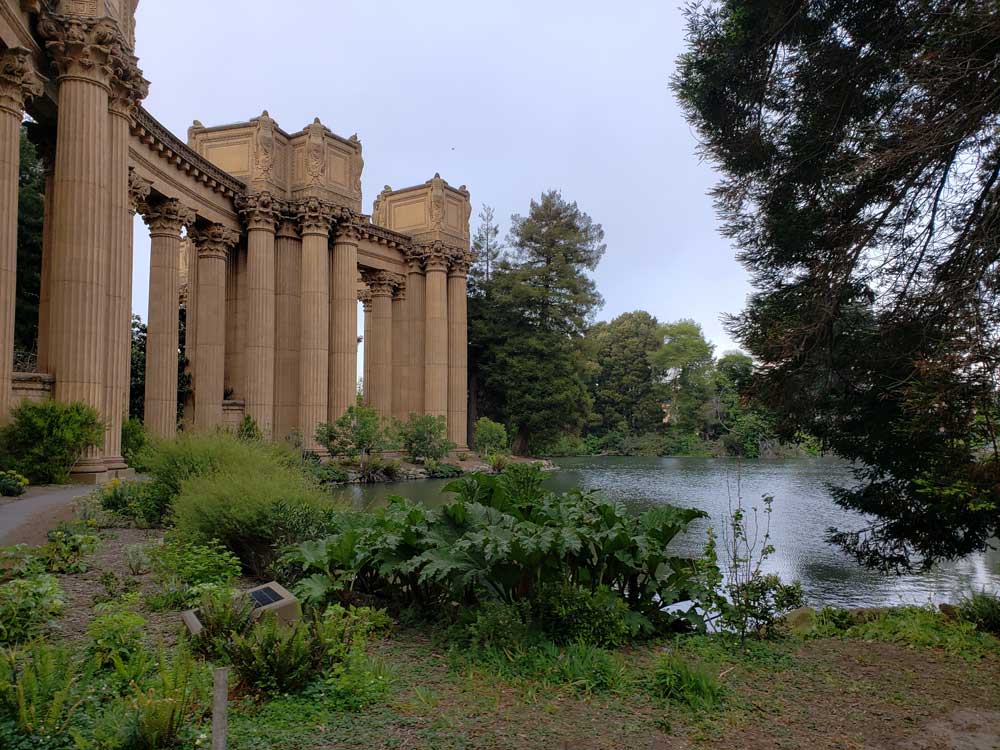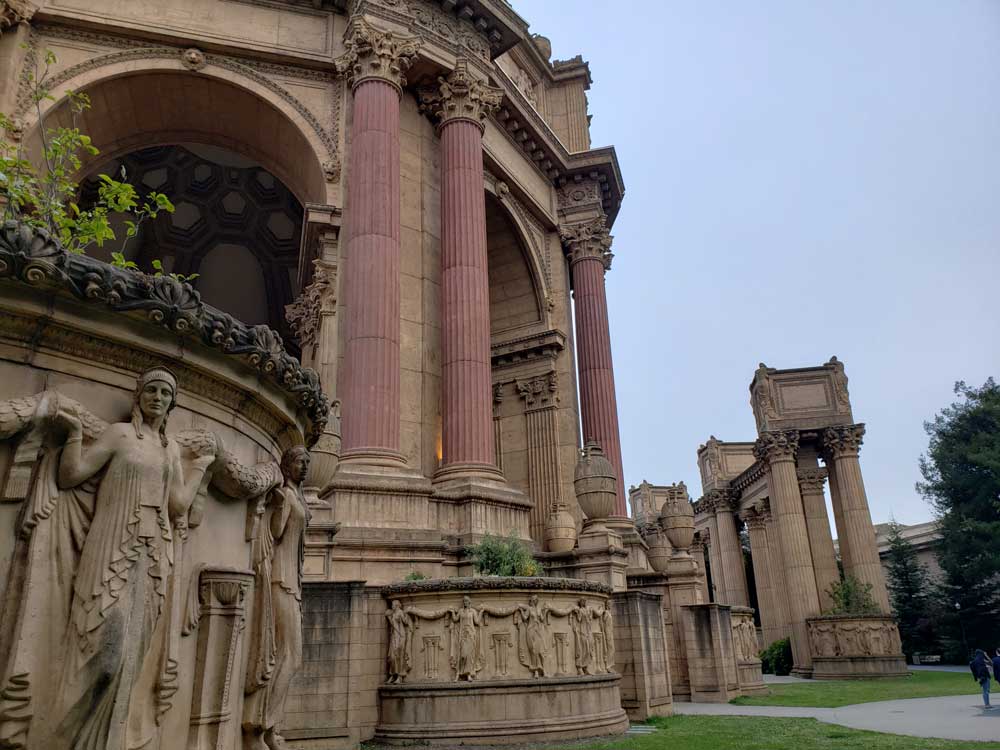Monumental structure originally constructed for the 1915 Panama-Pacific Exposition including the most prominent building of the complex, a 162 feet high open rotunda, is enclosed by a lagoon on one side, and is neighboring a large, curved exhibition center on the other
Take 11th St and Mission St to S Van Ness Ave. Follow S Van Ness Ave and Lombard St to Lyon St. Follow Lyon St to Bay St.
Overview
The Palace of Fine Arts in the Marina District of San Francisco, California is a monumental structure originally constructed for the 1915 Panama-Pacific Exposition in order to exhibit works of art. Completely rebuilt from 1964 to 1974, it is one of only a few surviving structures from the Exposition.

The most prominent building of the complex, a 162 feet high open rotunda, is enclosed by a lagoon on one side, and is neighboring a large, curved exhibition center on the other side, which is separated from the lagoon by colonnades. As of 2019, the exhibition center (one of San Francisco's largest single-story buildings) was being used as a venue for events such as weddings or trade fairs.
Conceived to evoke a decaying ruin of ancient Rome, the Palace of Fine Arts became one of San Francisco's most recognizable landmarks. A renovation of the lagoon, walkways, and a seismic retrofit were completed in early 2009.
The Palace of Fine Arts was one of ten palaces at the heart of the Panama-Pacific Exhibition. The Palace of Fine Arts was designed by Bernard Maybeck, who was tasked with creating a building that would serve as a quiet zone where exhibition attendees could pass through between visiting the crowded fairgrounds and viewing the paintings and sculptures displayed in the building behind the rotunda. Maybeck designed what was essentially a fictional ruin from another time, taking his inspiration from Roman and Ancient Greek architecture (specifically Piranesi's etching of the remnants of the so-called Temple of Minerva Medica in Rome), and also from Böcklin's symbolist painting Isle of the Dead.
For a time the Palace housed a continuous art exhibit, and during the Great Depression, W.P.A. artists were commissioned to replace the decayed Robert Reid murals on the ceiling of the rotunda.
Underside of the rotunda
Built around a small artificial lagoon, the Palace of Fine Arts is composed of a wide, 1,100 ft pergola around a central rotunda situated by the water. The lagoon was intended to echo those found in classical settings in Europe, where the expanse of water provides a mirror surface to reflect the grand buildings and an undisturbed vista to appreciate them from a distance.
Ornamentation includes Bruno Zimm's three repeating panels around the entablature of the rotunda, representing "The Struggle for the Beautiful", symbolizing Greek culture. while Ulric Ellerhusen supplied the weeping women atop the colonnade and the sculptured frieze and allegorical figures representing Contemplation, Wonderment and Meditation.
The underside of the Palace rotunda's dome features eight large insets, which originally contained murals by Robert Reid. Four depicted the conception and birth of Art, "its commitment to the Earth, its progress and acceptance by the human intellect," and the four "golds" of California (poppies, citrus fruits, metallic gold, and wheat).
This article uses material from the Wikipedia article "Palace of Fine Arts", which is released under the Creative Commons Attribution-Share-Alike License 3.0

